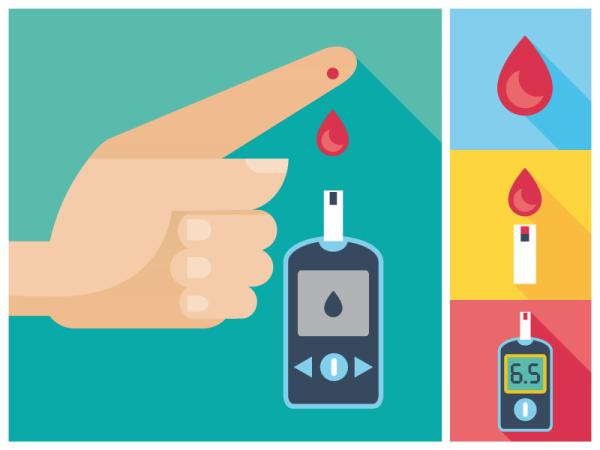Dr. Laura A. Young and colleagues from the University of North Carolina at Chapel Hill examined the efficacy of self-testing blood glucose levels by people with Type 2 diabetes (T2DM). Their report is published in JAMA Internal Medicine. People with Type 1 diabetes, who must use insulin, certainly benefit from self-monitoring blood glucose (SMBG— they must know if their insulin levels take blood glucose too low or if more is needed — it can be lifesaving). But for people with T2DM who are not using insulin, there has been a debate in medical circles as to whether SMBG has real benefits.
Dr. Young and co-workers examined the efficacy of SMBG on long term blood glucose control by measuring the levels of glycated hemoglobin (HbA1C), and the effect, if any, on health-related quality of life (HRQOL). Participants in their study were recruited from 15 primary care practices in North Carolina and were randomly assigned to one of three groups:
- no SMBG;
- once-daily SMBG with meters provided by the investigators;
- once-daily SMBG with the meters provided plus an automated message relating the glucose level to the time of day and relationship to food intake.
The participants were all over 30 years old (average age was 61), had HbA1C levels between 6.5 and 9.5 percent in the six months before the study. Fifty-four percent were women, and the median BMI was between 33 and 34.
Glycated hemoglobin reflects the level of blood glucose because the hemoglobin in red blood cells "picks up" glucose from the blood. If the blood glucose level is usually high, then more of these cells will have glucose bound to their hemoglobin. And since the "lifespan" of a red blood cell is only about 3 months, the percent of cells with glycated hemoglobin is an index of what was happening with them over that period.
The HRQOL was assessed by surveying both the physical and mental characteristics of the participants at the conclusion of the study.
A total of 429 people with T2DM were included in the study. At baseline and after one year in the study, participants' HbA1C levels were measured, and the effects of the different treatment protocols assessed. The investigators found that SMBG — with or without additional messaging — made no difference to blood glucose control when compared to that found when SMBG was not used (groups 2 and 3 VS group 1). After a year of followup, group 1's HbA1C levels increase by 0.04 percent while those of the two messaging groups declined by 0.05 and 0.10 percent for groups 2 and 3 respectively. None of these differences were statistically or clinically significant the authors noted. In addition, there were no differences between the groups in HRQOL either.
In an accompanying editorial Drs Elaine C. Khoong and Joseph S. Ross, write "These findings and others support the recommendations of the Society of General Internal Medicine and Endocrine Society that discourage frequent blood glucose monitoring among patients with type 2 diabetes. Routine SMBG merits a “less is more” designation because there were no clear benefits accrued, which leaves only possible harms." On an individual level, for patients with T2DM who do not use insulin, these results mean fewer finger sticks and concern about fluctuating blood glucose levels. Of course, the use of SMBG must be tailored to the situation of each patient, but these results suggest that SMBG is not necesssarily useful for all.




